The pickup truck market in the United States is booming. Last year, Ford sold nearly 900,000 units of its F-Series line of trucks. There are competitors from all of the major players.
Generally speaking, there are three types of trucks. There are heavy duty trucks like the Ford F-350 or Ram 3500. There’s the half-ton truck, like the F-150, Chevrolet Silverado 1500 or the Ram 1500. Then there’s the mid-size, such as the Toyota Tacoma or Chevrolet Colorado.
Over the past decade, to keep up with safety requirements and consumer demand, trucks have grown in size. The midsized trucks of today are as large as the half-ton trucks from the 2000s. There was a time where nearly every truck you could buy would fit securely in a garage.
With these changes, trucks have also become more complex and more expensive. With a few option boxes checked, it’s easy to get a half-ton truck into the $50,000 range. Many of the mid-size trucks run into the low $40,000 range if you want a few options.
One truck, at least on paper, seems to buck that trend. The Nissan Frontier is the cheapest truck you can buy in the United States with a starting price below $20,000. It’s also smaller in overall footprint that all the current mid-size truck competitors.
Last seeing a major refresh in 2004, the Nissan Frontier has aged compared to the competition, but still sells in decent volume. Why? We wanted to find out.
After spending a week in a 2018 Nissan Frontier SV Midnight Edition Crew Cab with four-wheel drive, we’ve come up with some reasons why you might want to add the Frontier to your shopping list.
1. Affordable Pricing
One of the biggest draws to the Nissan Frontier is the pricing. It’s probably what would get you in the door of the dealership to check out the truck. In the United States, the Frontier starts at $18,990 before destination. It’s the only new pickup truck available in the United States starting under $20,000.
Then you ask, “Isn’t it a 14-year-old truck?”
Yes, it is in a lot of ways. But that’s how the Frontier can remain so price competitive. Many of the overhead costs, including tooling, was fully paid for years ago. Nissan’s cost to build this truck in Canton, Mississippi, is lower than the competition.
The truck we used for this piece carries a price of $33,560 with delivery, but we’ve found some online for just a hair over $30,000 U.S.
A similarly equipped Colorado? We can’t build one exactly the same, but to get close, we’re still up to just over $38,000.
There are features that you can’t get on Frontier that the competition has, such as Android Auto and Apple CarPlay support, but you’re not without some key items.
2. Essential Features
A truck that hasn’t seen a significant update in quite a few years isn’t likely going to have the same features you’d expect out of a fresh new truck. But the Frontier has some essentials that you’ll want.
For example, our review unit had dual-zone automatic climate control, a backup camera, Bluetooth, SiriusXM support, and an automatically dimming rearview mirror.
We also have heated cloth seats and fog lamps. Many of those items are optional on more-expensive trims of the competition.
If you really wanted an updated infotainment system, you could easily add one from the aftermarket with support for Car Play or Android Auto, plus anything else you’d be looking for. The stock stereo doesn’t control car features, so you aren’t losing functionality by going aftermarket.
We’d still like to see support for blind spot monitoring, autonomous emergency braking, and a better set of headlights. Those are all safety features you’ll likely see on an updated Frontier, but it’s severely lacking on the current truck.
3. It’s a Safe Truck
Some people gravitate towards pickup trucks because they believe that bigger vehicles are safer. While the Frontier doesn’t have the active preventative safety features like autonomous emergency braking or rear cross traffic alert, it’s still a safe truck.
The Insurance Institute for Highway Safety is an independent organization that crash tests vehicles and then rates them.
The Frontier Crew Cab earns the highest rating in the side, roof strength, and moderate overlap tests. The small overlap test, a test that wasn’t introduced until recently, the truck scored a “Moderate” rating.
ALSO SEE: 2018 Ford F-150 Pros and Cons
That small overlap rating is lower than most of the competition’s trucks, but the overall safety is still solid, especially considering when the truck was engineered. It’s not top of its class, but we’ve seen worse-ranked vehicles.
4. Quality and Reliability
When you’re buying a truck, you want to know it’ll be built to last. It has to work hard and be inexpensive to maintain.
Every year, JD Power and Associates hands out an Initial Quality Survey award, or IQS, and they just announced their 2018 winners of best initial quality. In the midsize truck segment that winner is the Frontier.
The Frontier’s simplicity helps here. There are no completed electronics to go awry. The truck is built with components that are proven to work reliably for a long time. It’s easy to tease the truck by saying it’s 14 years old but building something like this consistently for this many years allows Nissan to work out all the kinks that might exist.
The factory warranty is only 3 years / 36,000 miles bumper-to-bumper and 60,000 miles for the powertrain – some of the competition is better — but combined with a high JD Power score means you should be able to feel quite confident in your purchase.
5. Towing Capacity
One of the main reasons why you might consider a pickup truck is because you have something you want to tow. It might be a small boat for the weekend or a set of side-by-sides to attack the sand dunes. The Frontier has you covered.
The maximum towing of any Frontier is 6,640 pounds, though our time with the Frontier was in an SV Midnight Edition 4-wheel drive with the automatic transmission and the short wheelbase, so it reduces our maximum towing to 6,370 pounds.
That number bests the Honda Ridgeline, which is capped at 5,000 pounds. A similarly equipped Tacoma (double cab, four-wheel drive) equipped with the optional tow prep package is just 30 pounds more at 6,400 pounds.
The class leader here is the Chevrolet Colorado at 7,000 pounds for the gasoline (and 7,600 pounds for the diesel), but the Frontier is still very competitive.
Additionally, 6,370 pounds will tow most of these weekend toys without any issue. A pair of Polaris RAZRs is only 5,500 pounds.
6. Payload Capacity
Many truck folks lament that the big cab full-size trucks still have small beds. Midsize trucks have always had the smaller beds and payload capacity, but the differences aren’t as large as you’d think.
For example, the cargo capacity of the Ford F-150 with the 5.5’ bed is 52.8 cu-ft. The Frontier long bed’s cargo volume is 33.5 cu-ft.
A base V6 F-150’s maximum payload is 1,990 pounds. The maximum Frontier can carry is 1,460 pounds, with our test truck being 1,350 pounds.
ALSO SEE: Toyota Tacoma TRD Pro Review
The point here is going up a class in pickup size doesn’t net you a whole lot more payload than the Frontier, which was updated significantly in 2004. The F-150 is all-new for 2015 and received an update for 2018.
7. Off-Road Capability
While you can off-road any vehicle if you have enough ambition and momentum, you generally want to stick to vehicles that have some extra safeguards in place and are designed to head off the pavement.
The Midnight Edition we drove is capable of off-roading, thanks to acceptable approach and departure angles, but if you are going to do it, you want the PRO-4X.
The PRO-4X is an all-wheel drive only Frontier that sits higher off the ground than a normal Frontier. It also has skid plates to protect vital components underneath the truck that you might hit. The last thing you want to do is puncture the oil pan.
Additionally, the PRO-4X has a 32.6-degree approach angle, a 23.3 departure angle, and a 20.5-degree breakover angle.
Toyota’s TRD Off-Road Tacoma 32 degrees for the approach angle, 23.5 degrees for the departure angle, and 21 degrees for the breakover angle. Both off-road trucks are incredibly close in off-road capability.
Only moving up to the TRD Pro in the Tacoma, a truck that starts at $41,720, do you get more significant off-road capability.
8. Personalization
If you’re someone that wants to modify or personalize their ride, the Frontier is the right truck for you. Because it hasn’t been changed in a while, aftermarket companies have had plenty of time to get their parts out.
Lift kits? Easy. Replacement bumpers that support LED lighting and winches? No problem. Nearly everything you’d need to make your Frontier a serious off-road pickup is just a phone call away from one of the many aftermarket companies out there.
Is it as flushed out as a Jeep Wrangler or a Toyota Tacoma? No. But remember the cost of entry is lower here.
9. Resale Value
Common sense tells you that a car that is sold inexpensively, with incentives and fleet sales, isn’t a car that will hold its resale value particularly well. Interestingly, that doesn’t seem to be the case with the Frontier.
Sure, the first-year depreciation is a big hit – it is with most cars – but beyond that, it holds pretty well. We asked internet raconteur Bozi Tatervic to share with us some wholesale pricing for Frontiers heading to auction.
We found some 2015 models in good condition selling in the mid-$20,000s for the same trim of our test truck (SV Crew Cab with 4-wheel drive). Even some 2013 models are going for around $15,000 or so.
The resale value on a Tacoma is better over time, the residual value holds up here better than some cars on the market and seems reasonable for the marketplace.
10. American Made
While the badge on the hood says Nissan, the truck is assembled in the United States. It comes out of the company’s Canton, Mississippi, plant, which also makes the Titan.
The engine is produced at the company’s Powertrain Assembly Plant in Decherd, Tennessee.
No, the Frontier isn’t the perfect truck for everyone, but it does make sense for a decent swath of customers looking for a truck to get the job done. That someone might even be you.
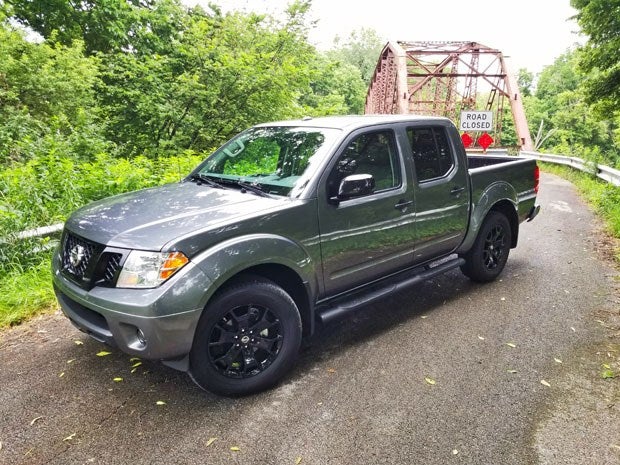
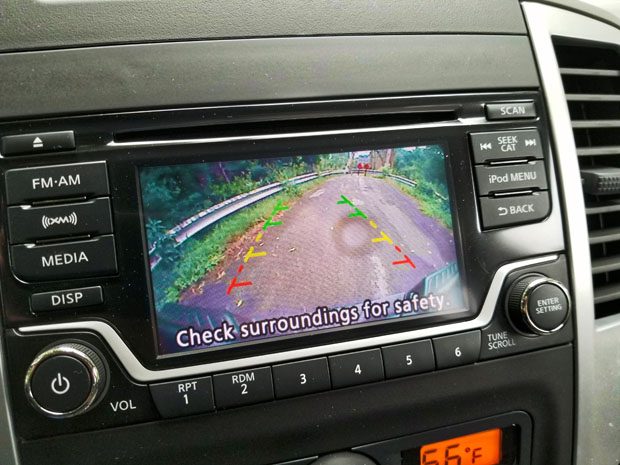

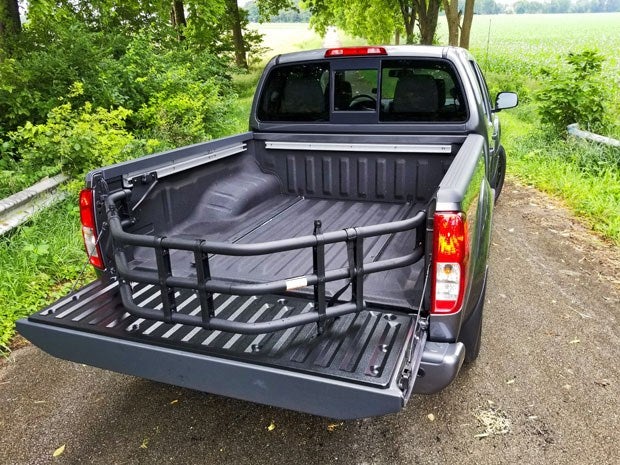
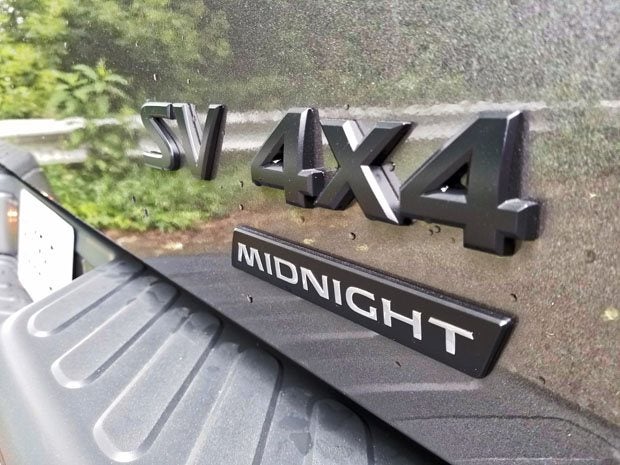
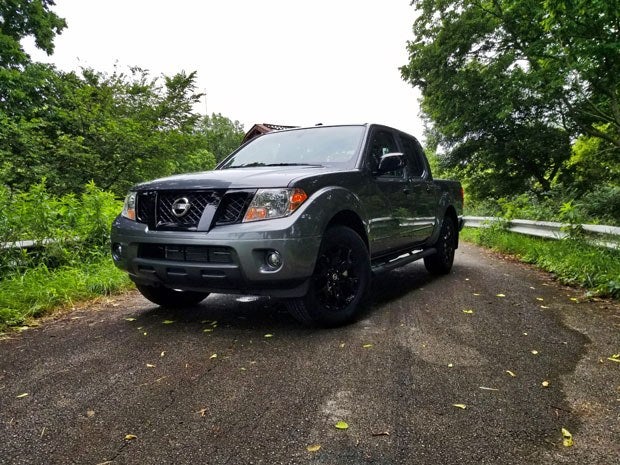
 Your Privacy Choices
Your Privacy Choices